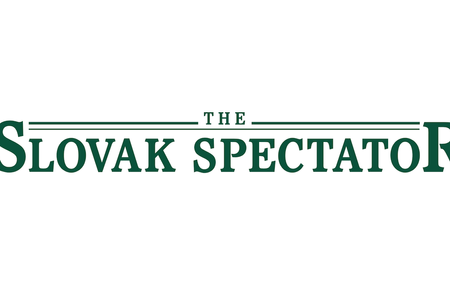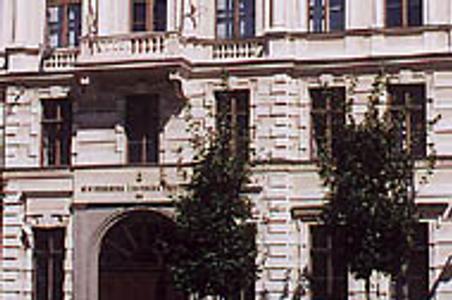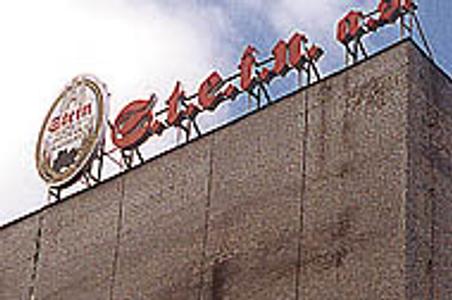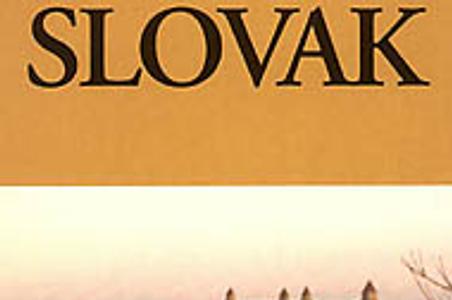Archive of articles - August 2001
If you desire to read an old article, use the search bar or select the publication date.
Japanese woman bringing Slovakia to home audience
Yuko Nakamura, 65, remembers first coming across the work of Slovak illustrator Miloslav Cipár in Paris in the early 1980's. She was fascinated by his drawings, which accompanied a Slovak children's book, and decided on the spot to translate the work into Japanese. She also resolved to travel to Slovakia and meet the people behind the fairytale."I had no idea where the country was," she says, admitting that she also hadn't known that Slovaks lived under communism. But it was that knowledge, of Slovakia's communist experience, that gave her what she felt were her first keys to decoding the cultural mystery behind Cipár's fairytale illustrations. "The book was very different from our children's books," she recalls. "I thought that it was perhaps because the [communist] system prevented [Slovak] writers from writing freely, and that some had thus found a way to express their feelings and desire for liberation through fairytales.
Enviro chapter could be closed by February
The 'environment chapter' - a list of environmental laws Slovakia must pass on its accelerated march to membership in the European Union - may be closed within half a year. The country's current environmental legislation is widely regarded as one of its greatest obstacles to EU entry.The chapter is one of 29 in the acquis communautaire, a document laying out the legislative changes new members have to make before acceptance. Slovakia has already closed 19 chapters, and is currently negotiating with the EU on the remaining 10.September and October will be key months for talks as the Slovak Environment Ministry begins a series of 'technical meetings' with the EU commission, during which concrete plans for the passage of EU environmental requirements will be drawn up. If all goes well, say ministry officials, the chapter could be closed by February.
NBS: Devín bank investor a fraud
One of Slovakia's most controversial banks, Devín banka, was put under forced administration August 24 after running into severe liquidity problems under the weight of mounting losses.The bank, which has been at the centre of a number of scandals involving Russian debt recovery and links to opposition and coalition political parties, is likely to file for bankruptcy, central bank governor Marián Jusko said, unless an investor put 3 billion crowns in cash into the bank's basic capital by August 31."My personal guess is that it won't happen. The bank's losses are enormous," he said as Devín went under central bank administration.
Slovak Television trying to protect against political influence in election run-up
State run Slovak Television (STV) has drawn up a written editorial code to ensure that principles of independence and objectivity are adhered to by its reporters, and to protect the station from possible attempts at political manipulation in the lead-up to the autumn 2002 general elections.To be submitted in September to the nine-member STV Council, which oversees programme balance and objectivity at the public broadcaster, the code is expected to take effect immediately after the council's approval.STV said the new guidelines had to be adopted to protect the television from "potential attempts by various political or other interest groups to misuse the TV's air space for presentation of their respective interests" - a danger which, said STV spokesperson Milena Rážová, would "grow with the [approach of] the upcoming elections".
Brewery starts final investor search
On Bratislava's Blumentálska Street, the aroma of fermenting hops and barley wafts out from what appears an ordinary, grey office block. The heady fumes sometimes stop pedestrians in their tracks.A quick turn of the head to discover the source of the arresting smell reveals the Stein brewery. Brewing beer since 1873, Stein has built up a proud tradition, but has seen its domestic beer market share slump to 4.3% at the end of 2000. Unless a third tender for an investor into the brewery, which was declared bankrupt in 1999, is a success, Blumentálska's hops odour will soon become a distant memory.By the end of the tender on September 11, those close to the bankruptcy process privately admit, the brewery's fate will be sealed - for better or worse.
Markíza Foundation rejects criticism
"[TV] Markíza's success should not become a graveyard of its humanity, friendship and love. It does not want to, nor should it, forget those for whom it was founded, to whom it owns everything, and from whom many need help. That is why the Markíza Foundation was set up," wrote Pavol Rusko, co-owner of the private Markíza TV station, in the Markíza Foundation's manifesto of late 1999.Rusko's business instincts have served his foundation as well as they did his hugely popular station: During the less than two years since its start, the Markíza Foundation has collected 17 million Slovak crowns ($340,000), making it the fifth richest foundation in Slovakia.But officials from some established foundations are suspicious of Markíza's charity activities. Pavol Demeš, a doyen of the Slovak NGO sector, said of Markíza that "this foundation devotes too much time to self-promotion [through TV Markíza]. There are other foundations in Slovakia worth promoting, and which are doing at least as good a job as the Markíza Foundation."
Small foundations say they won't survive new bill
Health worker Soňa Holúbková and media baron Pavol Rusko at the moment have one thing in common; they both run charity foundations in Slovakia. This shared ground is being eroded, however, by backers of a draft law that would force foundation small-fry such as Holúbková to establish hefty endowment funds or give up their legal status.Holúbková, after years spent working with the mentally and physically disabled in a state institution, launched the Krajina harmónie (Land of Harmony) foundation in the north-west Slovak city of Žilina in 1995. She said that she wanted to make her work with the disabled "more effective".Pavol Rusko, part-owner of the thriving local TV station Markíza, started his Bratislava-based Markíza (Marquise) foundation as an offshoot activity two years ago in order, he explained, "to help the needy and spread the force of good."
Announcement
Our man in SpišSince this newspaper was founded in March 1995, its readers have occasionally pointed out that The Bratislava Spectator would have been a more appropriate name given our tendency to focus on affairs in the capital to the exclusion of Slovakia's fascinating regions.As of September 1, this criticism, at least, may no longer be invited. Chris Togneri, news and culture editor of the newspaper, has moved to the eastern Slovak town of Spišská Nová ves to become our first regional correspondent. He will be covering the news - be it in politics, society, economy or culture - that is made every week east of the River Váh.
New political bedfellows? Testing, testing
Political scientists are not fond of the media's penchant for speculating on the results of Slovakia's 2002 elections, still more than a year in the future. They argue that such predictions, often repeated, may in the end lead to their own fulfillment.With Vladimír Mečiar's opposition Movement for a Democratic Slovakia (HZDS) still well ahead in the polls, having occupied top spot since winning 1998 elections but being unable to form a government, it's easy to understand why these academics don't want the media to encourage fatalism among voters regarding a HZDS comeback. Were Mečiar to return, Slovakia's Nato and European Union accession dreams would evaporate, as would its promising foreign investment future.
Review: Slovak language text strong on cultural orientation
Published late last spring, Beginner's Slovak came to The Slovak Spectator's attention during research for a profile on its Slovak author, Elena Letňanová, a concert pianist, translator and repatriated dissident émigré (see "Returning pianist feeling shunned by compatriots" By Zuzana Habšudová, Vol. 7 No. 30). Letňanová was the first Slovak to play at Carnegie Hall in New York City, and has written a large tome on classical music, but would her rookie crack at a Slovak language textbook add anything to the market?Yes and no. The 208-page book is intended for the casual learner (no tedious language exercises, the barest-bones approach to grammar), and follows a salesman and his wife through 10 encounters on Slovak soil. Like all such beefed-up phrase books, the text seems an arbitrary compilation of words and phrases, with some everyday lingo omitted in favour of the esoteric. However, Beginner's Slovak contains the pithiest and best written summary of Slovak history I've ever read in a textbook, and offers a superb guide to negotiating modern Slovak life.
Slovaks on philanthropy
Slovak foundations say they have mixed feelings about domestic philanthropy. Martin Renčo, spokesman of one of the country's most successful foundations, Nadácie Deťom Slovensko, said the public still mistrusted the Slovak foundation sector to a degree. "There is no tradition here of giving money towards public causes," he said.Data on philanthropy, however, do not support such pessimism. A March 2001 annual survey commissioned by USAID Slovakia showed that 44% of Slovaks claimed that they or some member of their families donated money or a non-financial gift of around 400-500 crowns ($8-10) at least once a year. This result is lower than the 70% of Americans who claim to be involved in philanthropic activities, although part of the US figure includes church-related volunteerism.Other NGO professionals said Slovak charity habits varied widely according to the cause for which money was canvassed. "The public tends to support charity types of foundations, while those working on programmes to enhance democracy can find donors only abroad," explained Boris Strečanský of the ETP/Ekopolis Foundation, which promotes environmental projects throughout Slovakia.
A Slovak revelation in the Big Apple
NEW YORK: Manhattan Island's East 66th Street houses Italian restaurants, news-stands operated by middle-Eastern immigrants, the brick and concrete halls of a metropolitan university, skyscrapers, posh apartments manned by doormen in red suits, and a large, modern, Roman-style church. Every Sunday morning, through the church's stone walls, seep songs and prayers in the Slovak language.The 600-seat cathedral, St. John's Nepomucene, was built in the 1920s by Slovak immigrants and used to be the heart of a thriving Slovak and Czech neighbourhood in New York City's upper-east side. Today it is a one-building Slovak enclave in what has become a wealthy and ethnically diverse area, most of the original Slovak inhabitants having died and their descendants scattered. Nevetheless, mass continues every Sunday at 11:00, the lone regular and large-scale gathering of Slovaks in the world's immigrant capital.On a recent Sunday, over 100 showed up for the service, some travelling over an hour from New Jersey, Brooklyn and Queens.
- Weekend: Celebration of fun comes to Malacky Photo
- No more photos or bank statements? Slovakia moves to ease residence process
- News digest: Fico’s bloc wants to save money by restricting electoral access
- Slovakia loses another EV model to Spain as Stellantis chooses Zaragoza over Trnava
- Top 10 events in Bratislava for foreigners
- 3 free things to do in Bratislava in the next seven days
- Convicted of multiple murders, Slovakia’s mafia boss seeks release from prison
- Slovakia plans to restrict access to new medicines amid funding shortfall
- Maria Theresa on the banks of Bratislava
- No more photos or bank statements? Slovakia moves to ease residence process
- 3 free things to do in Bratislava in the next seven days
- Weekend: Celebration of fun comes to Malacky Photo
- Digital Jarvis is real now. He is coming for your to-do list
- News digest: Fico’s bloc wants to save money by restricting electoral access
- The disinformation scene has become a tool of media capture
- Slovakia plans to restrict access to new medicines amid funding shortfall
- Maria Theresa on the banks of Bratislava
- No more photos or bank statements? Slovakia moves to ease residence process
- News digest: Violent gang in Bratislava is under arrest
- The Kremlin’s security agency has a Russian contractor in Slovakia - no one has noticed
- 3 free things to do in Bratislava in the next seven days
- Digital Jarvis is real now. He is coming for your to-do list
- Weekend: Celebration of fun comes to Malacky Photo
- The disinformation scene has become a tool of media capture
- Maria Theresa on the banks of Bratislava
- A mayor resigns over €2.7 million fraud scandal at town hall
- Show me your moves! Slovak hockey stars share their best pick-up lines
- No more photos or bank statements? Slovakia moves to ease residence process
- He designed Gatwick. But this is his masterpiece
- Fico praises China and Vietnam as models, says liberal democracy has failed
- News digest: Violent gang in Bratislava is under arrest
- The compass points to Kúty, and people are starting to follow
- News digest: Prosecutor seeks jail for NBS Governor Kažimír as his political support wanes
- Slovakia loses another EV model to Spain as Stellantis chooses Zaragoza over Trnava
- Slovak female triathlete shatters barriers with historic win at Himalayan event
- Weekend: Celebration of fun comes to Malacky Photo
- News digest: Fico’s bloc wants to save money by restricting electoral access
- Slovakia plans to restrict access to new medicines amid funding shortfall
- No more photos or bank statements? Slovakia moves to ease residence process
- Top 10 events in Bratislava for foreigners More articles ›









